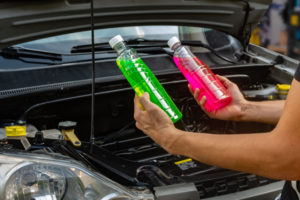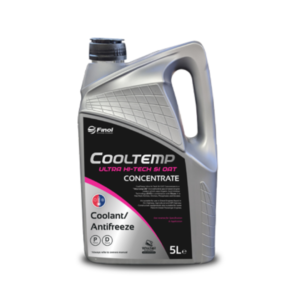When it comes to maintaining your vehicle’s cooling system, selecting the right coolant is paramount. Organic Acid Technology (OAT) coolant and Silicate-Enhanced Organic Acid Technology (Si-OAT) coolant are currently the two popular choices. Both offer reliable engine protection, but Si-OAT coolant provides several advantages over its OAT counterpart. It is fast becoming the go-to option for workshops and fleet operators alike due to its ability to offer coverage for mixed fleets. Hence, many garages and workshops are now choosing SI-OAT coolant over standard OAT coolants.

The most common colour of SI-OAT coolants is pink or violet; however, like all coolants, the colour has no impact on the performance of specification of the coolant and is just to help identify the different types of coolants. You should also consult the packaging or technical data sheet for the product to ensure it is an Si-OAT coolant.
- 1. Extended Service Life
One of the primary advantages of Si-OAT coolant is its extended service life. Depending on the manufacturer’s recommendations, Si-OAT coolant can often provide reliable protection for up to five years or 250,000 km, whichever comes first. In contrast, conventional OAT coolants typically require replacement every two to three years or 50,000 to 80,000 km. This extended service interval translates to less frequent coolant changes, saving you time and money on maintenance.
- Enhanced Corrosion Protection
Si-OAT coolant offers superior corrosion protection compared to OAT coolant. The addition of silicates in Si-OAT formulations helps create a protective barrier on metal surfaces within the engine’s cooling system. This barrier protects against corrosion, preventing rust and erosion of vital components like the radiator and water pump. As a result, Si-OAT coolant helps extend the life of your engine’s cooling system and reduces the risk of costly repairs.
- 3. Compatibility with Older Systems
Si-OAT coolant is designed to be compatible with older cooling system components, including those that may still have some residual conventional green coolant. This makes it an excellent choice for vehicles with older cooling systems transitioning to newer technology. OAT coolant, on the other hand, may not be as compatible with older systems and can lead to potential compatibility issues.
- 4. Improved Heat Transfer
Si-OAT coolant offers excellent heat transfer properties, ensuring your engine stays within its optimal temperature range. Efficient heat transfer helps prevent overheating and engine damage, making Si-OAT coolant a reliable choice for a range of applications.
- Reduced Environmental Impact
Si-OAT coolant is often considered more environmentally friendly than some OAT coolants. Many Si-OAT formulations are phosphate-free and contain low levels of organic acids. This minimises the potential harm to aquatic life if coolant is accidentally released into the environment, reducing the overall environmental impact of coolant disposal.
Because of these benefits that SI-OATs provide, several original equipment manufacturers (OEMs) recommend or require Si-OAT coolant for their vehicles. However, it’s essential to note that OEM recommendations can change over time, and it’s always best to consult your vehicle’s owner’s manual or contact the manufacturer’s service department for the most up-to-date information.
Some of these manufacturers include:
- General Motors (GM)
- Ford
- Chrysler/Dodge/Jeep
- Mercedes-Benz
- Volkswagen Group
- Volvo
- Honda
- Toyota
- Scania
- MAN
It’s important to note that while these manufacturers have recommended using Si-OAT coolants, the specific coolant requirements can vary depending on the vehicle model and year. Using the recommended coolant ensures the longevity and proper function of your vehicle’s cooling system.
Finol’s Cooltemp Ultra Hi-Tech SI-OAT is one such high-performance Si-OAT coolant, free from nitrites, amines, phosphates and borates. It is available for applications across all industries, including passenger cars, trucks and buses, off-highway/construction vehicles, and agricultural machines.
It carries the following specs:
AFNOR NF R 15-601, ASTM D3306, ASTM D4985, BS 6580 (2010), CUNA NC 956-16, SAE J 1034. It also meets the OEM specs of Cummins CES 14603, Daimler/MB-325.5 & 325.6, MAN 324 Type SI-OAT, Scania TB 1451, TSIO/C2153/BG40, VW, Seat, Audi, Skoda, Porsche: VW TL 774 G (G12/G12++).
You can also view the full range of Cooltemp range of coolants & antifreeze. These are available to order now for nationwide bulk and packaged deliveries.
Other articles, you may also be interested in:
- Increasing farm production this Sowing Season: Role of High-Quality lubricants for Farm Machinery
- Complexities of Engine Oils: A tailored approach for modern vehicles
- Volvo’s New VCS 2 Coolant & Antifreeze
- Importance of coolants and antifreeze for any vehicle
- Choosing the right coolant for optimum protection in winters

